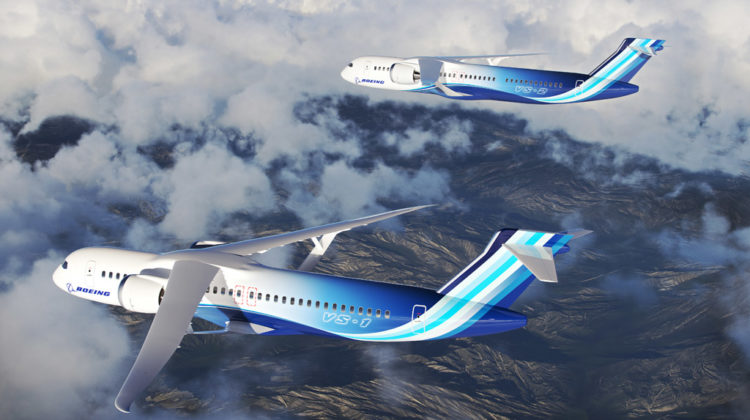
NASA has announced that it will provide significant funding for Boeing and its industry team to develop and flight test a full-scale transonic truss-braced wing (TTBW) demonstrator airplane. According to Boeing, when combined with expected advancements in propulsion systems, materials and systems architecture, a single-aisle airplane with a TTBW configuration could reduce fuel consumption and emissions by up to 30 per cent relative to today’s most efficient single-aisle airplanes.
The funding forms part of NASA’s Sustainable Flight Demonstrator (SFD) programme, which aims to advance the civil aviation industry’s commitment to reaching net zero carbon emissions by 2050, as well as the goals set forth in the US government’s Aviation Climate Action Plan.
‘The SFD programme has the potential to make a major contribution toward a sustainable future,’ said Greg Hyslop, Boeing chief engineer and executive vice president of engineering, test and technology. ‘It represents an opportunity to design, build and fly a full-scale experimental plane, while solving novel technical problems.’
The TTBW concept involves an aircraft with extra-long, thin wings stabilised by diagonal struts. This design results in an aircraft that’s much more fuel efficient than a traditional airliner due to a shape that creates less drag – resulting in its burning less fuel.
Ultrathin wings braced by struts with larger spans and higher-aspect ratios could also eventually accommodate advanced propulsion systems, which are currently limited by a lack of underwing space due to the use of low-wing airplane configurations. For the demonstrator vehicle, Boeing will use elements from existing vehicles and integrate them with all-new components.
NASA will provide US$425million in funding through the SFD Space Act Agreement. The SFD programme will also leverage up to US$725million in funding by Boeing and its industry partners to shape the demonstrator programme and meet the resource needs required.
The TTBW airframe concept is the result of more than a decade of development supported by NASA, Boeing and industry investments. Under previous NASA programmes, including the agency’s Subsonic Ultra Green Aircraft Research programme, Boeing conducted extensive wind tunnel testing and digital modelling to advance the design of the TTBW.
NASA plans to complete testing for the project by the late 2020s, so that technologies and designs demonstrated by the project can inform industry decisions about the next generation of single-aisle aircraft, which could enter into service in the 2030s.
‘Since the beginning, NASA has been with you when you fly. NASA has dared to go farther, faster, higher. And in doing so, NASA has made aviation more sustainable and dependable. It is in our DNA,’ said NASA administrator Bill Nelson. ‘It’s our goal that NASA’s partnership with Boeing to produce and test a full-scale demonstrator will help lead to future commercial airliners that are more fuel efficient, with benefits to the environment, the commercial aviation industry, and to passengers worldwide. If we are successful, we may see these technologies in planes that the public takes to the skies in the 2030s.’
‘NASA is working toward an ambitious goal of developing game-changing technologies to reduce aviation energy use and emissions over the coming decades toward an aviation community goal of net-zero carbon emissions by 2050,’ said Bob Pearce, NASA associate administrator for the Aeronautics Research Mission Directorate. ‘The Transonic Truss-Braced Wing is the kind of transformative concept and investment we will need to meet those challenges and, critically, the technologies demonstrated in this project have a clear and viable path to informing the next generation of single-aisle aircraft, benefiting everyone that uses the air transportation system.’



